At first, it may look like nothing more than a rash. But what if that sudden burning pain and strange blisters on your skin are actually something far more serious? Across the world, doctors warn that many people ignore the early signs of shingles until it’s too late—when the pain becomes unbearable and complications set in. The unsettling truth is that the virus behind shingles may have been sleeping in your body for decades, silently waiting for the right moment to strike.

What Exactly Is Shingles?
Herpes zoster, more commonly known as shingles, is a viral illness that strikes when the varicella-zoster virus—the same virus responsible for chickenpox—reawakens in the body. After someone recovers from chickenpox, the virus doesn’t vanish; instead, it hides within nerve cells for years or even decades. When triggered, it resurfaces as shingles, a condition marked by nerve pain and skin eruptions that can be both painful and long-lasting.
Why Does It Reactivate?
Several factors can trigger this dormant virus to come alive:
Aging — the risk rises sharply after age 50.
Stress — both physical strain and emotional trauma can weaken defenses.
Weakened immunity — chronic illnesses such as HIV or cancer, or medications that suppress the immune system, increase vulnerability.
History of chickenpox — only those who’ve had it are at risk, since shingles comes from reactivation, not reinfection.
Although shingles itself isn’t highly contagious, direct contact with its blisters can pass the varicella virus to someone who never had chickenpox—causing chickenpox, not shingles.
How Does It Start? Recognizing Symptoms
The earliest signs can be misleading, often resembling a mild flu. Typical symptoms include:
Sharp or burning pain, usually on one side of the body or face.
Tingling, itching, or sensitivity of the skin.
Fatigue, low-grade fever, and general discomfort.
Within a few days, these sensations give way to a red rash that develops fluid-filled blisters. Over time, the blisters break open, crust over, and gradually heal. In some cases, pain lingers for months or years after the rash disappears—this complication is known as postherpetic neuralgia, one of shingles’ most dreaded aftereffects.
Is There a Cure?

Unfortunately, there is no permanent cure for shingles, but effective treatments can minimize pain and shorten recovery:
Antiviral medication (acyclovir, valacyclovir) — most effective if started within 72 hours of rash onset.
Pain management — from simple painkillers like paracetamol to stronger medications in severe cases.
Soothing remedies — topical creams, cool compresses, and rest help relieve irritation.
Prevention and Protection
The best defense against shingles is prevention:
Vaccination — recommended for adults over 50, it significantly lowers the risk of developing shingles and reduces severity if it occurs.
Healthy lifestyle — proper sleep, stress management, and a strong immune system act as natural barriers.
Skin care — avoid scratching lesions to prevent secondary infections.
🔹 Conclusion: A Virus That Waits in Silence
Shingles is far more than just a rash—it’s a painful reminder that the chickenpox virus never truly leaves the body. For some, it brings weeks of discomfort; for others, it can leave lasting nerve pain that disrupts daily life.
Recognizing the early signs and seeking medical help quickly is the difference between a manageable illness and a long struggle with complications. Protecting your immune system and considering vaccination, especially after age 50, are crucial steps in staying safe.
Because shingles doesn’t just appear out of nowhere—it waits quietly inside, until the moment it decides to strike.

What Exactly Is Shingles?
Herpes zoster, more commonly known as shingles, is a viral illness that strikes when the varicella-zoster virus—the same virus responsible for chickenpox—reawakens in the body. After someone recovers from chickenpox, the virus doesn’t vanish; instead, it hides within nerve cells for years or even decades. When triggered, it resurfaces as shingles, a condition marked by nerve pain and skin eruptions that can be both painful and long-lasting.
Why Does It Reactivate?
Several factors can trigger this dormant virus to come alive:
Aging — the risk rises sharply after age 50.
Stress — both physical strain and emotional trauma can weaken defenses.
Weakened immunity — chronic illnesses such as HIV or cancer, or medications that suppress the immune system, increase vulnerability.
History of chickenpox — only those who’ve had it are at risk, since shingles comes from reactivation, not reinfection.
Although shingles itself isn’t highly contagious, direct contact with its blisters can pass the varicella virus to someone who never had chickenpox—causing chickenpox, not shingles.
How Does It Start? Recognizing Symptoms
The earliest signs can be misleading, often resembling a mild flu. Typical symptoms include:
Sharp or burning pain, usually on one side of the body or face.
Tingling, itching, or sensitivity of the skin.
Fatigue, low-grade fever, and general discomfort.
Within a few days, these sensations give way to a red rash that develops fluid-filled blisters. Over time, the blisters break open, crust over, and gradually heal. In some cases, pain lingers for months or years after the rash disappears—this complication is known as postherpetic neuralgia, one of shingles’ most dreaded aftereffects.
Is There a Cure?

Unfortunately, there is no permanent cure for shingles, but effective treatments can minimize pain and shorten recovery:
Antiviral medication (acyclovir, valacyclovir) — most effective if started within 72 hours of rash onset.
Pain management — from simple painkillers like paracetamol to stronger medications in severe cases.
Soothing remedies — topical creams, cool compresses, and rest help relieve irritation.
Prevention and Protection
The best defense against shingles is prevention:
Vaccination — recommended for adults over 50, it significantly lowers the risk of developing shingles and reduces severity if it occurs.
Healthy lifestyle — proper sleep, stress management, and a strong immune system act as natural barriers.
Skin care — avoid scratching lesions to prevent secondary infections.
🔹 Conclusion: A Virus That Waits in Silence
Shingles is far more than just a rash—it’s a painful reminder that the chickenpox virus never truly leaves the body. For some, it brings weeks of discomfort; for others, it can leave lasting nerve pain that disrupts daily life.
Recognizing the early signs and seeking medical help quickly is the difference between a manageable illness and a long struggle with complications. Protecting your immune system and considering vaccination, especially after age 50, are crucial steps in staying safe.
Because shingles doesn’t just appear out of nowhere—it waits quietly inside, until the moment it decides to strike.
While spider bites are uncommon, certain species such as the Black Widow and Brown Recluse spiders can cause medically significant reactions. These spiders are found in various regions of the United States and, though generally non-aggressive, may bite when disturbed. Proper identification, swift first aid, and appropriate medical care are critical for effective management.
This guide provides accurate information on how to identify these spiders, what to do if bitten, and the best ways to reduce your risk of encountering them.
Identifying Dangerous Spiders
Black Widow Spider
The Black Widow spider, part of the Latrodectus genus, is distinguished by its shiny black body and a red hourglass marking on the underside of its abdomen. It prefers secluded, dark environments and is often found in garages, woodpiles, crawl spaces, and outdoor sheds. Females are more likely to bite and are significantly more venomous than males.
Symptoms of a Black Widow bite may include:
Local pain at the bite site
Muscle cramps and abdominal pain
Sweating and nausea
In rare cases, difficulty breathing or hypertension
According to the Centers for Disease Control and Prevention (CDC), symptoms usually begin within 30 to 60 minutes after the bite and can range from mild to severe depending on the individual’s age, health, and sensitivity to venom.

Brown Recluse Spider
The Brown Recluse spider, belonging to the Loxosceles genus, is typically brown with a distinctive violin-shaped marking on its back. Native to the central and southern United States, it often inhabits attics, storage boxes, closets, and unused shoes or clothing. This spider is shy and will bite only when disturbed or trapped against the skin.
Symptoms of a Brown Recluse bite may include:
Initially mild or painless sensation
Redness, swelling, and the formation of a blister
Tissue necrosis in severe cases
Fever, chills, and fatigue
The Mayo Clinic notes that while many bites heal on their own, a small percentage can result in significant tissue damage requiring medical treatment.

What to Do If You Are Bitten
If you suspect you’ve been bitten by a Black Widow or Brown Recluse spider, immediate and calm action is crucial. Here are the steps recommended by the National Institutes of Health (NIH) and the American Association of Poison Control Centers:
Clean the bite area
Gently wash the area with soap and water to reduce the risk of infection.
Apply a cold compress
Use a cloth-wrapped ice pack on the affected area for 10-minute intervals to help reduce swelling and pain.
Elevate the limb
If the bite is on an arm or leg, elevate it to limit the spread of venom.
Limit movement
Try to stay still and calm, as physical activity can cause venom to spread more quickly through the body.
Seek medical attention
Contact a healthcare professional or go to an emergency room, particularly if you notice worsening symptoms, difficulty breathing, muscle pain, or a spreading wound.
If possible, capture or take a photo of the spider from a safe distance for identification, but only if doing so does not pose further risk.
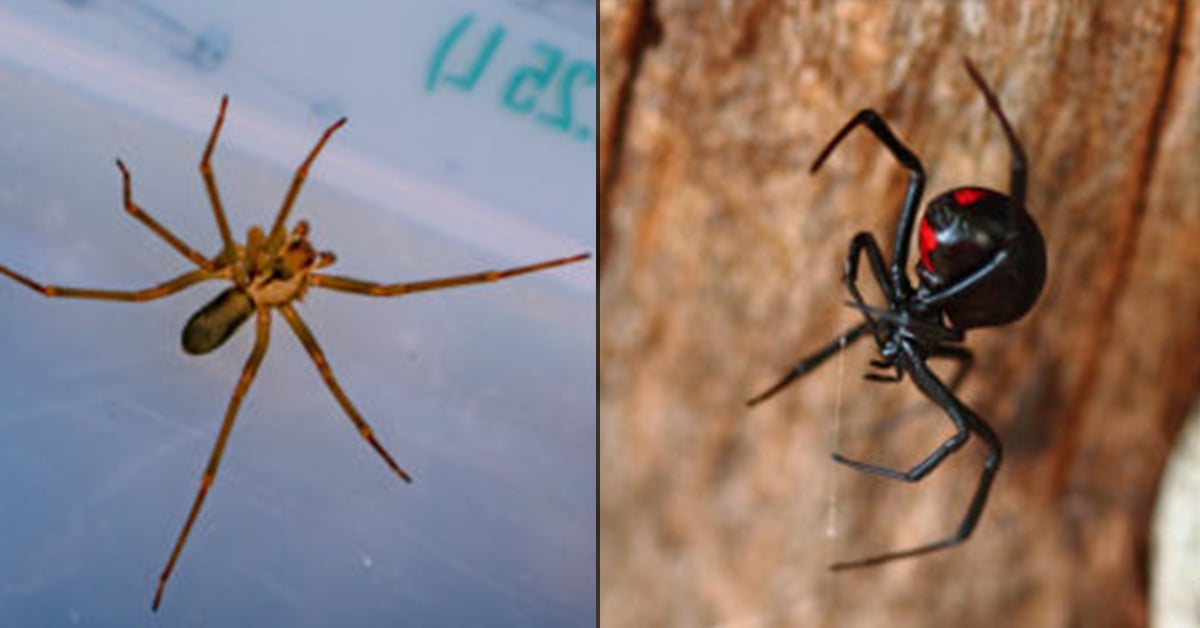
Medical Treatment Options
Black Widow Bite Treatment
For more severe cases, physicians may administer an antivenom specifically developed for Black Widow bites. Other treatment options include:
Intravenous pain medication
Muscle relaxants
Blood pressure monitoring
Hospital observation for complications
According to the CDC, fatalities from Black Widow bites are rare, but children, older adults, and those with underlying health conditions may require more aggressive treatment.
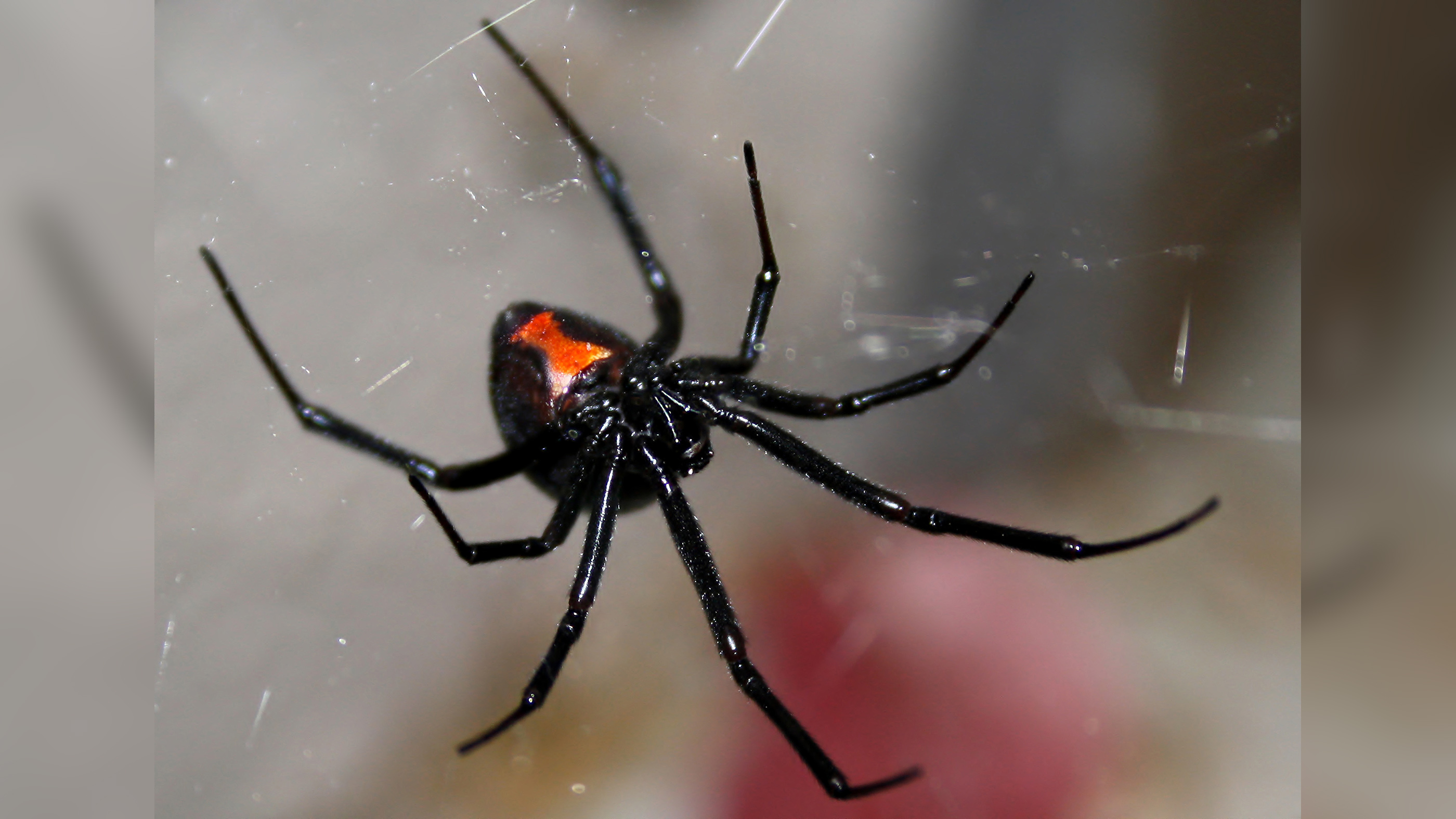
Brown Recluse Bite Treatment
Brown Recluse bites are typically managed with wound care. If necrotic tissue develops, surgical debridement may be necessary. Treatment may include:
Topical and oral antibiotics to prevent or treat infection
Corticosteroids to reduce inflammation
Pain management
Tetanus booster if needed
Avoid applying heat or attempting to extract venom, as both can worsen tissue damage.

Prevention Strategies
Preventing contact with venomous spiders is the most effective way to avoid bites. These preventive steps are recommended by the Environmental Protection Agency (EPA) and public health authorities:
Maintain a clean home environment
Regular cleaning in attics, closets, and other dark corners discourages spider nesting.
Shake out clothing and bedding
Especially if items have been in storage, inspect them before use.
Wear protective gear
When moving boxes or working in dark storage areas, wear gloves and long sleeves.
Seal entry points
Caulk cracks, seal vents, and use weather stripping around doors and windows to keep spiders from entering your home.
Consider professional pest control
If you live in a region where venomous spiders are common, a licensed pest control provider can inspect and treat your property.
When to Seek Emergency Help
You should seek immediate medical attention if:
The bite causes severe pain or cramping
There are signs of allergic reaction, such as swelling of the face or difficulty breathing
A wound is worsening or expanding
The bite occurred on a child, elderly adult, or immunocompromised individual

Final Thoughts
While Black Widow and Brown Recluse spider bites can lead to serious symptoms, they are highly treatable when addressed promptly. Most bites do not result in lasting damage, particularly when early steps are taken to clean the wound, manage symptoms, and seek professional medical care.
Understanding how to identify these spiders, what symptoms to monitor, and how to protect your home can greatly reduce the likelihood of dangerous encounters. Education and awareness remain the most effective tools in minimizing spider-related risks.
This guide provides accurate information on how to identify these spiders, what to do if bitten, and the best ways to reduce your risk of encountering them.
Identifying Dangerous Spiders
Black Widow Spider
The Black Widow spider, part of the Latrodectus genus, is distinguished by its shiny black body and a red hourglass marking on the underside of its abdomen. It prefers secluded, dark environments and is often found in garages, woodpiles, crawl spaces, and outdoor sheds. Females are more likely to bite and are significantly more venomous than males.
Symptoms of a Black Widow bite may include:
Local pain at the bite site
Muscle cramps and abdominal pain
Sweating and nausea
In rare cases, difficulty breathing or hypertension
According to the Centers for Disease Control and Prevention (CDC), symptoms usually begin within 30 to 60 minutes after the bite and can range from mild to severe depending on the individual’s age, health, and sensitivity to venom.

Brown Recluse Spider
The Brown Recluse spider, belonging to the Loxosceles genus, is typically brown with a distinctive violin-shaped marking on its back. Native to the central and southern United States, it often inhabits attics, storage boxes, closets, and unused shoes or clothing. This spider is shy and will bite only when disturbed or trapped against the skin.
Symptoms of a Brown Recluse bite may include:
Initially mild or painless sensation
Redness, swelling, and the formation of a blister
Tissue necrosis in severe cases
Fever, chills, and fatigue
The Mayo Clinic notes that while many bites heal on their own, a small percentage can result in significant tissue damage requiring medical treatment.

What to Do If You Are Bitten
If you suspect you’ve been bitten by a Black Widow or Brown Recluse spider, immediate and calm action is crucial. Here are the steps recommended by the National Institutes of Health (NIH) and the American Association of Poison Control Centers:
Clean the bite area
Gently wash the area with soap and water to reduce the risk of infection.
Apply a cold compress
Use a cloth-wrapped ice pack on the affected area for 10-minute intervals to help reduce swelling and pain.
Elevate the limb
If the bite is on an arm or leg, elevate it to limit the spread of venom.
Limit movement
Try to stay still and calm, as physical activity can cause venom to spread more quickly through the body.
Seek medical attention
Contact a healthcare professional or go to an emergency room, particularly if you notice worsening symptoms, difficulty breathing, muscle pain, or a spreading wound.
If possible, capture or take a photo of the spider from a safe distance for identification, but only if doing so does not pose further risk.

Medical Treatment Options
Black Widow Bite Treatment
For more severe cases, physicians may administer an antivenom specifically developed for Black Widow bites. Other treatment options include:
Intravenous pain medication
Muscle relaxants
Blood pressure monitoring
Hospital observation for complications
According to the CDC, fatalities from Black Widow bites are rare, but children, older adults, and those with underlying health conditions may require more aggressive treatment.

Brown Recluse Bite Treatment
Brown Recluse bites are typically managed with wound care. If necrotic tissue develops, surgical debridement may be necessary. Treatment may include:
Topical and oral antibiotics to prevent or treat infection
Corticosteroids to reduce inflammation
Pain management
Tetanus booster if needed
Avoid applying heat or attempting to extract venom, as both can worsen tissue damage.

Prevention Strategies
Preventing contact with venomous spiders is the most effective way to avoid bites. These preventive steps are recommended by the Environmental Protection Agency (EPA) and public health authorities:
Maintain a clean home environment
Regular cleaning in attics, closets, and other dark corners discourages spider nesting.
Shake out clothing and bedding
Especially if items have been in storage, inspect them before use.
Wear protective gear
When moving boxes or working in dark storage areas, wear gloves and long sleeves.
Seal entry points
Caulk cracks, seal vents, and use weather stripping around doors and windows to keep spiders from entering your home.
Consider professional pest control
If you live in a region where venomous spiders are common, a licensed pest control provider can inspect and treat your property.
When to Seek Emergency Help
You should seek immediate medical attention if:
The bite causes severe pain or cramping
There are signs of allergic reaction, such as swelling of the face or difficulty breathing
A wound is worsening or expanding
The bite occurred on a child, elderly adult, or immunocompromised individual
Final Thoughts
While Black Widow and Brown Recluse spider bites can lead to serious symptoms, they are highly treatable when addressed promptly. Most bites do not result in lasting damage, particularly when early steps are taken to clean the wound, manage symptoms, and seek professional medical care.
Understanding how to identify these spiders, what symptoms to monitor, and how to protect your home can greatly reduce the likelihood of dangerous encounters. Education and awareness remain the most effective tools in minimizing spider-related risks.

After sitting on a bench, they noticed a strange little creature completely covered in fur, lightly covering it. It looked like a harmless little insect, and the children wanted to touch it.
Leslie Howe went to Gwinnett County Park with her baby and two other children. It was a sunny day and the young mother decided to enjoy the beautiful weather with her children.
But her mother’s instincts prevented Leslie from letting her children touch the strange creature.

This was a very smart decision as I was late in learning the truth about this strange creature and how dangerous it is. Leslie unwittingly saved her children from a poisonous bite.
The creature was actually a “pus worm”. This is a special species because unlike ordinary caterpillars it secretes venom and can cause severe pain even when touched.
When a person is bitten by this caterpillar, the result is disastrous: it causes severe nausea and excessive sweating.

Be very careful when going outdoors, in parks or in places where there is a lot of vegetation. If you encounter this type of caterpillar, stay away from it and do not let children touch it. Especially small children can be severely affected by the bite of this insect.

Young children from Florida to North Carolina are reporting excruciating pain after coming into contact with the most venomous caterpillar in the U.S., the furry pus caterpillar, according to news reports. Some have petted the insect; others have been injured when the caterpillars fell onto them from trees.
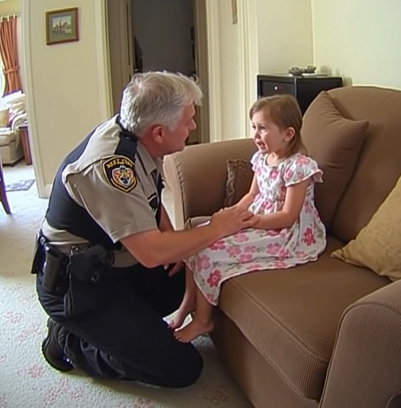
The midday sun cast long shadows across Maple Street as Officer José López stepped out of his patrol car. His heart weighed heavily with concern after hearing the dispatcher’s summary of the phone call. As he approached the modest one-story house, he noticed the chipped paint and overgrown lawn, signs of a family struggling to keep up.
He knocked gently on the door, listening carefully for any movement inside. A moment later, the door creaked open to reveal a small, frail figure. Liliana stood there, her eyes wide with a mix of fear and relief. Her oversized T-shirt hung loosely, emphasizing her swollen belly.
“Hi, Liliana,” José said softly, kneeling to her level. “I’m here to make sure you’re okay.”
The little girl nodded, clutching a worn-out teddy bear. “My tummy hurts so much,” she whispered, tears brimming in her eyes.
“Let’s get you looked at, okay?” José reassured her, ushering her gently towards the porch. “The ambulance is on the way.”
Inside, the house was quiet, save for the low hum of a TV still playing cartoons. Liliana’s mother lay on a sofa, unconscious and unmoving, her face pale and drawn. José’s heart ached at the sight, but he focused on Liliana, who needed immediate attention.
Minutes later, paramedics arrived, and Liliana was quickly assessed and taken to the hospital. As they left, José noticed a peculiar smell in the air, one that was hard to place but unsettling. He made a note to mention it to the detectives who would soon be combing through the house.
At the hospital, doctors worked swiftly to treat Liliana. The medical staff, accustomed to emergencies, were visibly moved by the little girl’s plight. It wasn’t long before they discovered the source of Liliana’s pain: she had ingested a substance that caused severe bloating and discomfort. The treatment was complicated but, fortunately, not life-threatening.
As Liliana was recovering, officers conducted a thorough investigation. They discovered that Liliana’s father and his friend had been involved in illegal activities, using substances that inadvertently contaminated the food and water. It was a tragic case of negligence and recklessness, leaving those unintentional victims at their most vulnerable.
The truth, when revealed, brought tears to many eyes. It was a heartbreaking reminder of the innocence caught in the crossfire of adult irresponsibility. Vanessa Gómez, the dispatcher, who had stayed on the line with Liliana, couldn’t shake the image of the little girl’s bravery and innocence. She visited Liliana in the hospital, bringing a new teddy bear to replace the worn one, a token of comfort and hope.
Support poured in from the community, offering assistance to Liliana and her mother, who, once stabilized, expressed deep gratitude for the care her daughter received. A local family offered to foster Liliana until her mother could fully recover, ensuring she would receive the love and care she needed.
The story of Liliana’s call to 911 spread throughout Pinos Verdes County, serving as a poignant reminder of the preciousness of life and the importance of vigilance and compassion. In the midst of tears, there was also hope—hope that Liliana’s courage could inspire change and bring about a safer environment for all children in the community.

Sundays have always carried a special meaning for me. I created a little ritual long ago, something that became more than a simple routine. During the busy weekdays, life rushes past me in a blur. I eat quickly, shop without thinking, and barely notice the details of what I’m buying. But Sundays are different. On Sundays I slow down, I make a list, and I go to the market with the intention of choosing everything carefully for the week ahead. 🛒
The market always feels alive. Sellers call out their offers, children run between the stalls, the air is filled with the smell of fresh bread and strong coffee. I usually stop at the same places, smiling at vendors I already know. I buy vegetables, still warm bread, maybe a small treat. But there are always two things I make sure to bring home: coffee and bananas. ☕🍌

That Sunday was no different. When I reached the fruit stand, my eyes immediately caught sight of the bananas. They were arranged neatly in bunches, glowing golden yellow, dotted with tiny brown freckles. In the sunlight, they looked almost too perfect. Without hesitation I grabbed a bunch and placed it into my basket. A small smile spread across my face as I imagined my Monday morning: fresh coffee and sweet bananas, the simple comfort I always looked forward to. 🌞
The next morning began like any other. The sunlight crept softly through the curtains. I was still half-asleep, but my mind was already picturing the taste of coffee and the sweetness of fruit. I set the bananas on the kitchen counter while the coffee machine hummed behind me. The room felt safe, warm, ordinary. But then something unusual caught my eye.
One of the bananas seemed strange. At first I thought it was only a bruise, a harmless dark spot on the skin. Bananas often have them. But when I looked closer, something about this “spot” felt too precise, too sharp in its shape. I leaned in. My breath slowed. And then, to my shock, the spot moved. 🤔

It was only a tiny twitch at first, almost invisible. But it was movement. My heart began to pound faster and faster. Before I could even react, the truth revealed itself. From between the bananas, a small head lifted. A forked tongue flicked out, quick as lightning. The speckles I thought were natural freckles were in fact scales.
It was no bruise. It was no shadow.
It was a snake. 🐍😱
I froze. Fear surged through my body. My hands trembled, and I nearly dropped the bunch to the floor. The thought that only seconds earlier I had been about to peel one and take a bite made my skin crawl. What if I hadn’t noticed? What if I had reached too quickly? The idea alone sent a shiver racing down my spine.
The snake was small, probably harmless, but in moments like that logic doesn’t matter. Fear speaks louder than reason. My kitchen, usually the warmest and most peaceful place in my home, suddenly felt foreign and invaded by something wild. I quickly grabbed a container, carefully placed the bananas inside, and sealed it shut. My safe morning had turned into a tense standoff with an unexpected guest. 🌪️
For several minutes I just sat at the table, hands still shaking, heart beating too fast. I stared at the container as if at any moment the snake might push its way out. Eventually I realized I couldn’t simply keep it there. I had to take it back. The short walk to the market felt endless. Every tiny movement inside the container made me tighten my grip, as if I were carrying something explosive. 🚶♂️
When I reached the market and explained what had happened, the vendor’s face turned pale. He carefully took the container, thanked me for returning it, and promised to check all the remaining boxes of fruit. A few customers overheard and gasped, whispering in disbelief. Who would ever imagine finding a live snake hidden in a bunch of bananas? 🍌🐍

On my way back home, the scene replayed in my mind again and again. I kept seeing the exact moment when the head lifted, when the tongue flicked. My morning, which was supposed to begin with quiet comfort, had instead become a story I would never forget.
But as the shock faded, another thought grew stronger. We trust appearances so easily. We trust the golden shine of fruit, the neat packaging, the friendly smile of a vendor. We believe what we see on the surface is all there is. But that morning proved how fragile such trust can be. Even behind the most ordinary and perfect surface, something unexpected may hide. 🌍✨
That harmless-looking bunch of bananas had become a reminder. Control is an illusion. We think we know what to expect, but life is full of surprises, some sweet and some terrifying. The smell of warm bread, the comfort of coffee — these are small joys. The sudden shock of a snake between bananas — that is a very different kind of surprise. Yet both belong to the same reality.

That evening, sitting quietly, I thought about the lesson. My day-to-day life was made of routines, and I liked that predictability. But life had shown me otherwise: even in the calmest routines, the extraordinary can appear out of nowhere. Since that day, I examine fruit more carefully. I turn it in my hands, check every angle. Sometimes I laugh at myself for being too cautious. But once you have seen the unexpected, you never forget. 🧐
When I tell this story now, people react differently. Some laugh in disbelief, others stare wide-eyed, imagining it happening to them. For me, though, it remains unforgettable. Even the simplest morning can become a tale you carry for a lifetime.
So the next time you open a bunch of bananas, admiring their golden skin and sweetness, remember: life is full of surprises. Some are delicious, others are frightening. But all of them stay in your memory forever. 😉🍌🐍☕
On my wedding night, I should have been in the arms of my husband, Ethan — not standing in the hallway, holding a pillow while his mother took my place in our bed.
I was exhausted from the long day — smiling for photographs, greeting guests, pretending everything was perfect. By the time we got to our room, I wanted nothing more than to rest beside the man I had just promised forever to.
But forever didn’t even last one night.
The door creaked open, and Ethan appeared with an uneasy expression.
“Mom’s too drunk,” he said quietly. “She needs a place to lie down. It’s too noisy downstairs.”
Behind him stood his mother, Margaret — elegant, sharp-eyed, her perfume mixed with the scent of wine. Her blouse hung loosely, her cheeks flushed red. She wasn’t stumbling like a drunk woman. She was watching me — calculating, cold.

“Claire, dear,” she said with a half-smile, “just for tonight. You don’t mind, do you?”
I froze. Ethan’s eyes pleaded with me not to make a scene.
“One night,” he whispered. “It’s just one night.”
So I forced a smile, picked up a pillow, and left my own bedroom — on my wedding night.
The Morning Discovery
Sleep didn’t come easily. I lay on the sofa, staring at the ceiling, hearing the faint creaks of the floorboards above me. Once or twice, I thought I heard whispers — low voices, footsteps. Then silence.
At dawn, I finally drifted off.
When I woke, sunlight was spilling across the floor. It was almost 6 a.m. I smoothed my hair, grabbed my robe, and quietly walked upstairs to wake Ethan.
The door was slightly open. I pushed it gently.
And froze.
Ethan lay on his side, back turned. The sheets were tangled. Margaret was lying close beside him, her face calm, her hand resting on the blanket between them.
My heart pounded. My throat went dry.
“Ethan?” I whispered.
Neither of them moved. Then my eyes fell to the sheets. There, on the white linen, was a reddish-brown stain — small, smeared, not quite dry.
I touched it. Still damp at the edge. The smell wasn’t alcohol.
It was metallic.
Blood.
Before I could speak, Margaret sat up suddenly, her smile too bright.
“Oh! You’re awake already? I must’ve fallen asleep here. How silly of me.”
Her tone was cheerful, but her eyes flicked toward the stain — and then to me.
Ethan stirred, muttered something I couldn’t understand, and turned his face into the pillow.
Something inside me cracked.
That morning, I smiled through breakfast, pretending everything was fine. But when everyone went back to their rooms, I sneaked into the laundry room.
There, buried beneath the bedsheets, I found a pair of red lace panties.
They weren’t mine.
And from that moment, I knew — whatever happened in that bed, I would never be able to unsee it.

The Perfect Life That Wasn’t
My name is Claire Miller, twenty-six years old. Just married. Just broken.
Ethan Miller was the kind of man women dream about — gentle, quiet, a doctor with soft hands and kinder eyes. The kind of man you’d trust with your life.
We met when I was a patient at his clinic. He brought me coffee, asked me questions no one else cared to ask. When he proposed, I thought fate had handed me peace after years of loneliness.
Our wedding was held by the sea. The sunset bled across the horizon, our vows drowned out by the sound of waves. It felt like forever.
But eternity lasted exactly six hours.
A Mother’s Shadow
After that night, everything changed. Margaret’s presence filled every corner of the house.
When I cooked, she “tasted” the food before Ethan could.
When I reached for his hand, she found some reason to interrupt.
When we sat together on the couch, she’d knock on the door with a tray of tea.
“She means well,” Ethan would say. “She’s just lonely.”
But loneliness wasn’t what I saw in her eyes. It was ownership.
One night, after Margaret had gone to bed, I whispered, “Ethan, what was that night about? Why did she sleep in our bed?”
He turned pale. “She didn’t mean anything by it,” he said softly. “She’s been through a lot since my dad died. She just… needs me close.”
His voice trembled. Like a boy, not a man.
The Secret in the Attic
A few nights later, I woke to the sound of quiet sobbing. It came from upstairs — from the attic, the one Margaret always kept locked.
I followed the sound, barefoot, heart pounding.
The door wasn’t locked that night.
Inside, the walls were covered with photographs — hundreds of them. Ethan as a baby. Ethan as a teenager. Ethan graduating medical school.
But in every picture, Margaret was there. Always touching him, holding him, smiling too wide.
On the desk was a diary. The first page read:
“After the accident, it was just you and me. Your father wanted to take you away. I couldn’t let that happen.”
My breath caught.
The next page was filled with angry scrawls, over and over:
“No one can take him from me.”
At the bottom was my wedding photo. My face was torn out.
I took the diary to Ethan the next morning. He stared at it for a long time, then whispered, “When I was ten, my dad died in a fire. The police thought Mom started it. They never proved it.”
He closed his eyes. “Since then, she’s never let anyone near me. Every girlfriend I had… left. She made sure of it.”
The Confrontation
I knew then — I couldn’t stay silent. That evening, while Ethan was out, I found Margaret in her study.
“You have to stop,” I said, my voice trembling. “You can’t keep controlling him. You’re destroying him.”
Her smile didn’t fade. “The world took everything from me,” she said. “I’m only keeping what’s left.”
“You’re killing him,” I whispered.
Margaret’s eyes flashed. “If you love him,” she hissed, “leave. Because everyone who stays with him disappears. His father. His friends. You’ll be next.”
The Letter
The next morning, Ethan and I packed our bags. We were ready to leave the house — maybe forever.
But just as we reached the car, the maid ran up to me with an envelope. “Mrs. Miller left this for you.”
Inside was a handwritten letter.
“Claire, please forgive me.”
The accident years ago — I didn’t cause it.
But I let him die, because I believed he wanted to take Ethan away.
I only wanted to keep my son safe.
But I know now, safety is not love.
“Let him be free.”
When Ethan finished reading, he didn’t speak.
Through the window, Margaret stood watching us, tears glistening on her cheeks — a woman broken by her own love.
We left that house and never returned. Ethan began therapy, slowly learning to exist without the shadow that had followed him all his life.
Sometimes, late at night, I still think about her — a woman who loved too fiercely and destroyed everything she tried to protect.
I write her name in my journal and whisper, “Love doesn’t kill, but possession does.”
Because some mothers don’t lose their sons to the world.
They lose them to their own fear of letting go. ❤️
I was exhausted from the long day — smiling for photographs, greeting guests, pretending everything was perfect. By the time we got to our room, I wanted nothing more than to rest beside the man I had just promised forever to.
But forever didn’t even last one night.
The door creaked open, and Ethan appeared with an uneasy expression.
“Mom’s too drunk,” he said quietly. “She needs a place to lie down. It’s too noisy downstairs.”
Behind him stood his mother, Margaret — elegant, sharp-eyed, her perfume mixed with the scent of wine. Her blouse hung loosely, her cheeks flushed red. She wasn’t stumbling like a drunk woman. She was watching me — calculating, cold.

“Claire, dear,” she said with a half-smile, “just for tonight. You don’t mind, do you?”
I froze. Ethan’s eyes pleaded with me not to make a scene.
“One night,” he whispered. “It’s just one night.”
So I forced a smile, picked up a pillow, and left my own bedroom — on my wedding night.
The Morning Discovery
Sleep didn’t come easily. I lay on the sofa, staring at the ceiling, hearing the faint creaks of the floorboards above me. Once or twice, I thought I heard whispers — low voices, footsteps. Then silence.
At dawn, I finally drifted off.
When I woke, sunlight was spilling across the floor. It was almost 6 a.m. I smoothed my hair, grabbed my robe, and quietly walked upstairs to wake Ethan.
The door was slightly open. I pushed it gently.
And froze.
Ethan lay on his side, back turned. The sheets were tangled. Margaret was lying close beside him, her face calm, her hand resting on the blanket between them.
My heart pounded. My throat went dry.
“Ethan?” I whispered.
Neither of them moved. Then my eyes fell to the sheets. There, on the white linen, was a reddish-brown stain — small, smeared, not quite dry.
I touched it. Still damp at the edge. The smell wasn’t alcohol.
It was metallic.
Blood.
Before I could speak, Margaret sat up suddenly, her smile too bright.
“Oh! You’re awake already? I must’ve fallen asleep here. How silly of me.”
Her tone was cheerful, but her eyes flicked toward the stain — and then to me.
Ethan stirred, muttered something I couldn’t understand, and turned his face into the pillow.
Something inside me cracked.
That morning, I smiled through breakfast, pretending everything was fine. But when everyone went back to their rooms, I sneaked into the laundry room.
There, buried beneath the bedsheets, I found a pair of red lace panties.
They weren’t mine.
And from that moment, I knew — whatever happened in that bed, I would never be able to unsee it.

The Perfect Life That Wasn’t
My name is Claire Miller, twenty-six years old. Just married. Just broken.
Ethan Miller was the kind of man women dream about — gentle, quiet, a doctor with soft hands and kinder eyes. The kind of man you’d trust with your life.
We met when I was a patient at his clinic. He brought me coffee, asked me questions no one else cared to ask. When he proposed, I thought fate had handed me peace after years of loneliness.
Our wedding was held by the sea. The sunset bled across the horizon, our vows drowned out by the sound of waves. It felt like forever.
But eternity lasted exactly six hours.
A Mother’s Shadow
After that night, everything changed. Margaret’s presence filled every corner of the house.
When I cooked, she “tasted” the food before Ethan could.
When I reached for his hand, she found some reason to interrupt.
When we sat together on the couch, she’d knock on the door with a tray of tea.
“She means well,” Ethan would say. “She’s just lonely.”
But loneliness wasn’t what I saw in her eyes. It was ownership.
One night, after Margaret had gone to bed, I whispered, “Ethan, what was that night about? Why did she sleep in our bed?”
He turned pale. “She didn’t mean anything by it,” he said softly. “She’s been through a lot since my dad died. She just… needs me close.”
His voice trembled. Like a boy, not a man.
The Secret in the Attic
A few nights later, I woke to the sound of quiet sobbing. It came from upstairs — from the attic, the one Margaret always kept locked.
I followed the sound, barefoot, heart pounding.
The door wasn’t locked that night.
Inside, the walls were covered with photographs — hundreds of them. Ethan as a baby. Ethan as a teenager. Ethan graduating medical school.
But in every picture, Margaret was there. Always touching him, holding him, smiling too wide.
On the desk was a diary. The first page read:
“After the accident, it was just you and me. Your father wanted to take you away. I couldn’t let that happen.”
My breath caught.
The next page was filled with angry scrawls, over and over:
“No one can take him from me.”
At the bottom was my wedding photo. My face was torn out.
I took the diary to Ethan the next morning. He stared at it for a long time, then whispered, “When I was ten, my dad died in a fire. The police thought Mom started it. They never proved it.”
He closed his eyes. “Since then, she’s never let anyone near me. Every girlfriend I had… left. She made sure of it.”
The Confrontation
I knew then — I couldn’t stay silent. That evening, while Ethan was out, I found Margaret in her study.
“You have to stop,” I said, my voice trembling. “You can’t keep controlling him. You’re destroying him.”
Her smile didn’t fade. “The world took everything from me,” she said. “I’m only keeping what’s left.”
“You’re killing him,” I whispered.
Margaret’s eyes flashed. “If you love him,” she hissed, “leave. Because everyone who stays with him disappears. His father. His friends. You’ll be next.”
The Letter
The next morning, Ethan and I packed our bags. We were ready to leave the house — maybe forever.
But just as we reached the car, the maid ran up to me with an envelope. “Mrs. Miller left this for you.”
Inside was a handwritten letter.
“Claire, please forgive me.”
The accident years ago — I didn’t cause it.
But I let him die, because I believed he wanted to take Ethan away.
I only wanted to keep my son safe.
But I know now, safety is not love.
“Let him be free.”
When Ethan finished reading, he didn’t speak.
Through the window, Margaret stood watching us, tears glistening on her cheeks — a woman broken by her own love.
We left that house and never returned. Ethan began therapy, slowly learning to exist without the shadow that had followed him all his life.
Sometimes, late at night, I still think about her — a woman who loved too fiercely and destroyed everything she tried to protect.
I write her name in my journal and whisper, “Love doesn’t kill, but possession does.”
Because some mothers don’t lose their sons to the world.
They lose them to their own fear of letting go. ❤️
BERNE, Indiana — A late-night collision on State Road 218 turned a peaceful rural road into a chaotic emergency scene after a Jeep struck a horse-drawn Amish buggy, throwing nearly everyone out of the vehicle and sending multiple people to hospitals. First responders were called to the crash at about 11:20 p.m. on October 7; when they arrived they found a badly damaged buggy scattered across the pavement and a Jeep in a ditch.
The buggy was carrying nine people at the time of the crash. Local officials say a total of seven people from the buggy were injured and taken for medical care; reports describe six of those occupants as juveniles, though some local accounts list slightly different age breakdowns. The buggy’s driver, 32-year-old Ruben L.M. Schwartz of Berne, was airlifted to Lutheran Hospital. Joseph L.M. Schwartz, 20, and five juvenile passengers were transported by ambulance to Parkview Hospital. Two other passengers — Saraetta L. Schwartz, 32, and a 2-year-old — declined treatment at the scene.
Adams County Sheriff Dan Mawhorr told reporters the Jeep — driven by 33-year-old Bradley J. Ocilka of Burlington, Kentucky — struck the slower-moving buggy from behind while traveling eastbound on SR 218. Ocilka was taken to the hospital for a legal blood draw but declined other medical attention at the scene. At the time of reporting no charges had been filed while the crash remains under investigation.
Multiple agencies responded to the scene, including Adams County EMS, Berne and Geneva police departments, the Berne Fire Department, Wells and Jay County EMS, Indiana State Police, and Lutheran Hospital’s Flight Team. Officials described the scene as chaotic, with first responders working quickly to provide medical treatment and to secure the site.
Photos released by authorities show the buggy broken and strewn across the road and emergency vehicles lit up along the rural highway. The Amish community in the large Adams County Swiss-Amish settlement is close-knit; a collision like this — especially at night — can have outsized impact on a single family and their neighbors. Local leaders and residents are expected to rally around the family as they recover.
This crash highlights the hazards horse-drawn conveyances face on modern roads. Passing or attempting to pass slow-moving buggies on narrow rural highways carries risk, particularly at night. Safety experts urge drivers to slow down, pass with care, and give extra room when a buggy or other slow vehicle is present. Rural law enforcement and community groups also frequently remind motorists to watch for reflective markers, lanterns, and to be alert for sudden slowdowns. (For local readers: please always slow for buggies and give them plenty of space.)
The investigation remains ongoing. No formal charges had been announced in initial reports; authorities continue to review the crash, interview witnesses, and evaluate any evidence collected at the scene. We will update this post as officials release more information.
Prayers & help: this family faces a difficult recovery. If you’re local and want to help, consider checking with community organizations or local churches about ways to support the family or a recovery fund — and please respect the family’s privacy while they heal.
The buggy was carrying nine people at the time of the crash. Local officials say a total of seven people from the buggy were injured and taken for medical care; reports describe six of those occupants as juveniles, though some local accounts list slightly different age breakdowns. The buggy’s driver, 32-year-old Ruben L.M. Schwartz of Berne, was airlifted to Lutheran Hospital. Joseph L.M. Schwartz, 20, and five juvenile passengers were transported by ambulance to Parkview Hospital. Two other passengers — Saraetta L. Schwartz, 32, and a 2-year-old — declined treatment at the scene.
Adams County Sheriff Dan Mawhorr told reporters the Jeep — driven by 33-year-old Bradley J. Ocilka of Burlington, Kentucky — struck the slower-moving buggy from behind while traveling eastbound on SR 218. Ocilka was taken to the hospital for a legal blood draw but declined other medical attention at the scene. At the time of reporting no charges had been filed while the crash remains under investigation.
Multiple agencies responded to the scene, including Adams County EMS, Berne and Geneva police departments, the Berne Fire Department, Wells and Jay County EMS, Indiana State Police, and Lutheran Hospital’s Flight Team. Officials described the scene as chaotic, with first responders working quickly to provide medical treatment and to secure the site.
Photos released by authorities show the buggy broken and strewn across the road and emergency vehicles lit up along the rural highway. The Amish community in the large Adams County Swiss-Amish settlement is close-knit; a collision like this — especially at night — can have outsized impact on a single family and their neighbors. Local leaders and residents are expected to rally around the family as they recover.
This crash highlights the hazards horse-drawn conveyances face on modern roads. Passing or attempting to pass slow-moving buggies on narrow rural highways carries risk, particularly at night. Safety experts urge drivers to slow down, pass with care, and give extra room when a buggy or other slow vehicle is present. Rural law enforcement and community groups also frequently remind motorists to watch for reflective markers, lanterns, and to be alert for sudden slowdowns. (For local readers: please always slow for buggies and give them plenty of space.)
The investigation remains ongoing. No formal charges had been announced in initial reports; authorities continue to review the crash, interview witnesses, and evaluate any evidence collected at the scene. We will update this post as officials release more information.
Prayers & help: this family faces a difficult recovery. If you’re local and want to help, consider checking with community organizations or local churches about ways to support the family or a recovery fund — and please respect the family’s privacy while they heal.
In a recent and urgent development, some medications have been withdrawn from pharmacies and healthcare systems across different countries because of serious cardiovascular risks. Health authorities have raised alarms over the potential link between specific drugs and life-threatening conditions such as embolisms, blood clots (thrombi), and even heart attacks. Patients and healthcare providers are strongly urged to stay informed and exercise caution.
What Are Thrombi and Why Are They Dangerous?
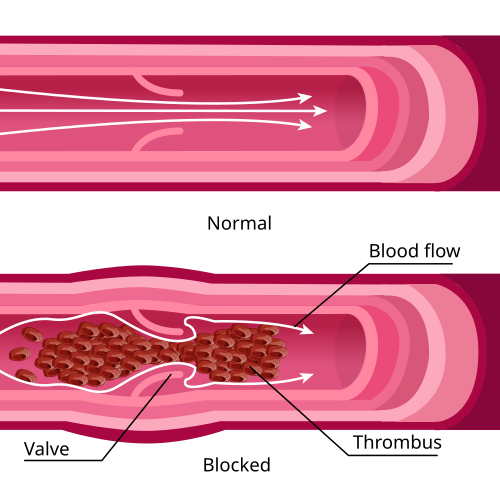
Thrombi, or blood clots, form when blood coagulates inside a vein or artery. Though clotting is a natural process to prevent excessive bleeding, abnormal clot formation within the bloodstream can block blood flow to vital organs. This can lead to:
Pulmonary embolism (clot in the lungs)
Stroke (clot in the brain)
Heart attack (clot in the coronary arteries)
Deep vein thrombosis (DVT)
Even a single clot can be fa.ta.l if it blocks oxygen and nutrients from reaching critical areas of the body. That’s why medications linked to increased clotting risks are taken extremely seriously by regulatory agencies.
Which Pills Are Under Investigation or Removed?

Though specific drug names vary by country and regulatory decision, the most commonly cited types of pills include:
– Hormonal contraceptives (especially certain types of third-generation birth control pills)
– Some anti-inflammatory drugs
– Certain types of diet pills or appetite suppressants
Specific formulations of COVID-19-related therapies and vaccines (in rare cases)
Authorities such as the FDA (U.S. Food and Drug Administration), EMA (European Medicines Agency), and local health ministries have either suspended, limited, or completely withdrawn the use of these drugs. Notably, the risk seems to be more pronounced in individuals with pre-existing conditions such as:
High blood pressure
Smoking history
Obesity
Diabetes
Genetic clotting disorders
Symptoms You Should Watch Out For
If you have taken any medication recently and experience any of the following symptoms, please seek medical attention immediately:
Sudden chest pain
Shortness of breath
Unexplained swelling in the legs or arms
Severe headache or visual disturbances
Rapid heartbeat or irregular pulse
Time is important in treating clot-related events. Even if you’re unsure, it’s better to be evaluated by a doctor than to ignore potential warning signs.
What Should You Do If You’re Taking These Medications?
Do not stop your medication abruptly unless advised by a healthcare provider. Stopping without guidance may cause more harm.
Contact your doctor and discuss alternative treatments or a risk assessment.
Stay informed through reliable sources like your local health department or international health agencies.
Report side effects to your national health authority’s adverse event reporting system.
Your awareness can save your life or someone else’s. Health systems rely on public vigilance and timely reporting to prevent large-scale harm.
What Are Thrombi and Why Are They Dangerous?

Thrombi, or blood clots, form when blood coagulates inside a vein or artery. Though clotting is a natural process to prevent excessive bleeding, abnormal clot formation within the bloodstream can block blood flow to vital organs. This can lead to:
Pulmonary embolism (clot in the lungs)
Stroke (clot in the brain)
Heart attack (clot in the coronary arteries)
Deep vein thrombosis (DVT)
Even a single clot can be fa.ta.l if it blocks oxygen and nutrients from reaching critical areas of the body. That’s why medications linked to increased clotting risks are taken extremely seriously by regulatory agencies.
Which Pills Are Under Investigation or Removed?

Though specific drug names vary by country and regulatory decision, the most commonly cited types of pills include:
– Hormonal contraceptives (especially certain types of third-generation birth control pills)
– Some anti-inflammatory drugs
– Certain types of diet pills or appetite suppressants
Specific formulations of COVID-19-related therapies and vaccines (in rare cases)
Authorities such as the FDA (U.S. Food and Drug Administration), EMA (European Medicines Agency), and local health ministries have either suspended, limited, or completely withdrawn the use of these drugs. Notably, the risk seems to be more pronounced in individuals with pre-existing conditions such as:
High blood pressure
Smoking history
Obesity
Diabetes
Genetic clotting disorders
Symptoms You Should Watch Out For
If you have taken any medication recently and experience any of the following symptoms, please seek medical attention immediately:
Sudden chest pain
Shortness of breath
Unexplained swelling in the legs or arms
Severe headache or visual disturbances
Rapid heartbeat or irregular pulse
Time is important in treating clot-related events. Even if you’re unsure, it’s better to be evaluated by a doctor than to ignore potential warning signs.
What Should You Do If You’re Taking These Medications?
Do not stop your medication abruptly unless advised by a healthcare provider. Stopping without guidance may cause more harm.
Contact your doctor and discuss alternative treatments or a risk assessment.
Stay informed through reliable sources like your local health department or international health agencies.
Report side effects to your national health authority’s adverse event reporting system.
Your awareness can save your life or someone else’s. Health systems rely on public vigilance and timely reporting to prevent large-scale harm.
A Scene Too Intense to Forget
What first appears to be an ordinary roadside clip quickly transforms into something that leaves viewers unsettled. A large fuel tanker sits motionless under a visibly damaged bridge. Cracks spread across the concrete, the support beams appear strained, and every shift in the structure seems to hint at the possibility of collapse.
The short video, which has circulated widely across TikTok and other platforms, has been nicknamed “Seconds from Collapse” by online audiences. It raises a haunting question: was this a real disaster narrowly avoided, a staged awareness piece, or simply a moment caught during construction or demolition work?
The footage provides no answers. Instead, it leaves millions of viewers speculating, debating, and reflecting on the fragility of everyday safety.

Why the Clip Captivates Millions
Part of the reason the viral clip has gained so much traction is its powerful imagery. A tanker carrying fuel, one of the most dangerous types of cargo, sits beneath a bridge that looks as though it could give way at any second. The visual alone is enough to stir fear.
For many people, it also taps into a universal anxiety: the collapse of structures we depend on every day. Bridges, highways, and overpasses are part of the daily rhythm of modern life. When we see one in danger of failing, it touches something deeply human—the awareness that stability can vanish without warning.
The lack of context only makes the video more gripping. Some captions claim it depicts an old bridge that gave way under stress, while others suggest it was filmed during a planned demolition or a controlled safety test. Without verified details, the audience is left to wonder, filling in the blanks with their own fears and memories of past tragedies.

Real-Life Parallels Add Weight
Even if the clip itself remains unexplained, it strongly resembles real-life disasters that have already taken place across the world.
In Taiwan in 2019, the Nanfang’ao Bridge collapsed suddenly, sending a tanker and several fishing boats crashing into the water below. The horrifying event was captured on camera and quickly made global headlines.
In India in 2025, Gujarat’s Gambhira Bridge gave way during morning traffic, leaving a tanker dangling from the wreckage while rescue teams fought to secure the structure in dangerous conditions.
In Brazil in 2024, a highway bridge collapsed just as a tanker carrying hazardous chemicals was crossing. The incident caused both human loss and environmental contamination, sparking national debates about infrastructure investment.
When viewers see the viral “tanker under bridge” video, many are reminded of these real events. That connection adds gravity to what might otherwise be dismissed as a staged performance or a routine construction scene.
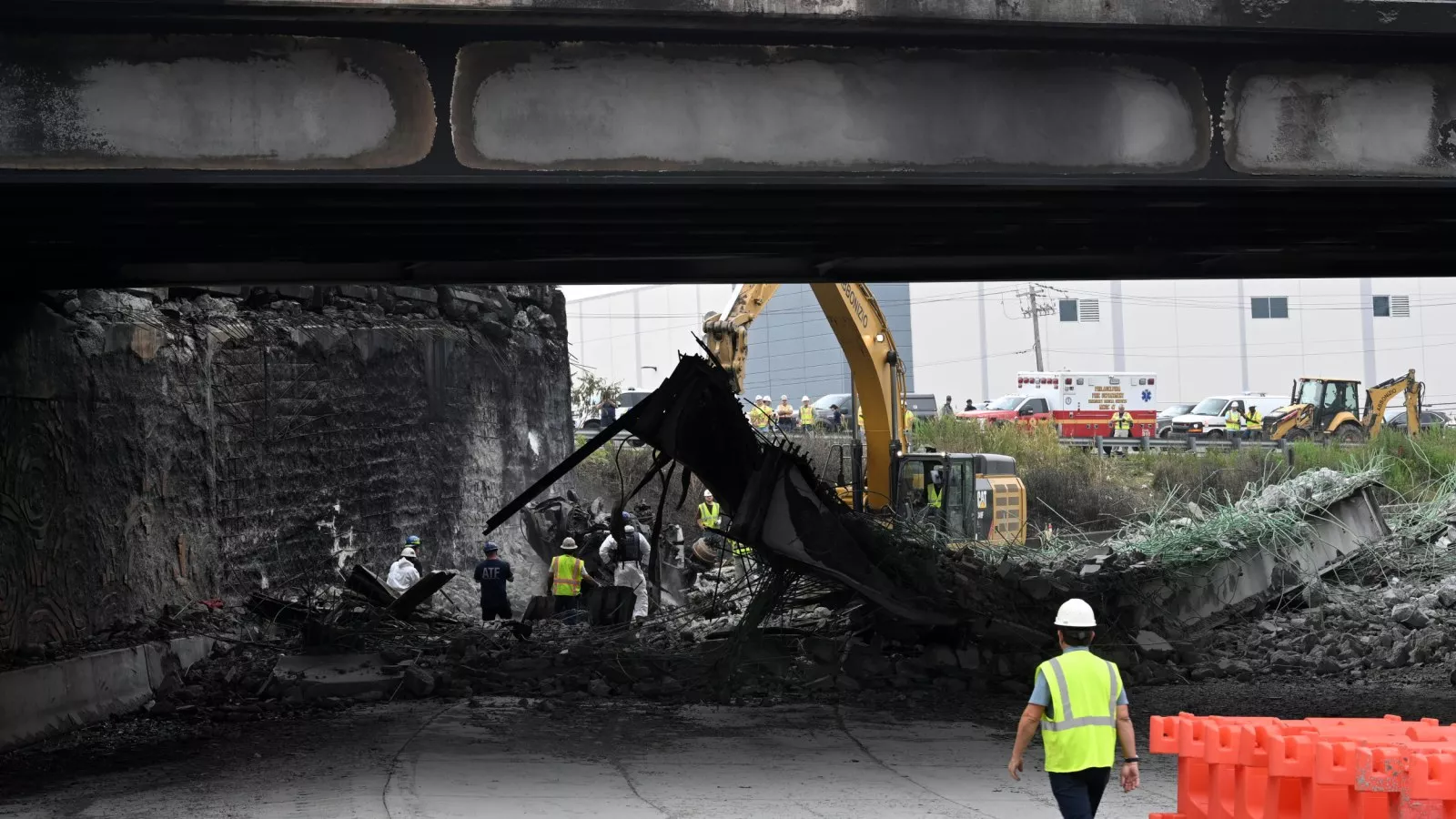
A Symbol of Larger Fears
Beyond the question of authenticity, the video has become a symbol of something much bigger. Around the world, countless bridges and highways are operating beyond their intended lifespan. Some were built decades ago for lighter traffic loads, yet today they carry far more vehicles than ever imagined.
Engineers have long warned that delayed maintenance and insufficient funding put these structures at risk. Each time a viral clip like this emerges, it reignites public conversation about whether enough is being done to ensure safety.
For many viewers, the tanker frozen beneath the cracked bridge becomes more than just an eerie image. It serves as a metaphor for vulnerability—the idea that society often waits until disaster strikes before addressing problems that were visible all along.
The Role of Viral Media
The internet plays a major role in shaping how such imagery spreads. A short, context-free video can travel faster than official reports, sparking speculation before authorities have a chance to clarify details. While this can lead to confusion, it also draws much-needed attention to issues that might otherwise go unnoticed.
In this case, whether the video was staged or not, it has already fueled widespread discussion about infrastructure safety. Viewers share their own experiences of driving over deteriorating bridges, express concern for loved ones who travel daily, and call for stronger investment in public works.
That ripple effect demonstrates the power of viral media: even a 20-second clip can inspire serious conversations about safety, responsibility, and preparedness.

Courage in Times of Collapse
Amid the anxiety stirred by the footage, it is also important to remember that moments of crisis often reveal human resilience. In past bridge collapses, ordinary drivers have acted within seconds to save others. Emergency responders have risked their own lives to stabilize unstable structures, evacuate victims, and prevent further harm.
These stories highlight that even when systems fail, courage and compassion rise to meet the challenge. The viral tanker video may remind us of danger, but it can also remind us of the bravery that surfaces when people face the unthinkable.
Lessons to Take Away
The sight of a tanker halted under a deteriorating bridge leaves us with a lasting impression. Whether the video shows a real near-disaster, a staged awareness campaign, or a controlled construction moment, its impact cannot be denied.
It underscores that safety is never guaranteed. Structures we rely on daily require constant monitoring, repair, and investment. Ignoring cracks—literal or metaphorical—can have devastating consequences.
At the same time, the clip offers a chance to reflect on how communities respond when faced with fear. Public awareness, media attention, and collective action can push leaders to prioritize safety before tragedy strikes.

Conclusion
In the end, the viral video of a tanker trapped under a crumbling bridge has become more than entertainment. It is a mirror of our shared anxieties and a reminder of real events that have taken lives in the past. It asks us to imagine what we would do if faced with the same sight, and it challenges society to ensure that such scenarios remain rare.
Preparedness is not optional. Bridges, roads, and other critical infrastructure form the backbone of modern life. One overlooked crack can change everything. By taking warnings seriously, investing in maintenance, and staying vigilant, we can turn moments of fear into opportunities for resilience and prevention.
What first appears to be an ordinary roadside clip quickly transforms into something that leaves viewers unsettled. A large fuel tanker sits motionless under a visibly damaged bridge. Cracks spread across the concrete, the support beams appear strained, and every shift in the structure seems to hint at the possibility of collapse.
The short video, which has circulated widely across TikTok and other platforms, has been nicknamed “Seconds from Collapse” by online audiences. It raises a haunting question: was this a real disaster narrowly avoided, a staged awareness piece, or simply a moment caught during construction or demolition work?
The footage provides no answers. Instead, it leaves millions of viewers speculating, debating, and reflecting on the fragility of everyday safety.

Why the Clip Captivates Millions
Part of the reason the viral clip has gained so much traction is its powerful imagery. A tanker carrying fuel, one of the most dangerous types of cargo, sits beneath a bridge that looks as though it could give way at any second. The visual alone is enough to stir fear.
For many people, it also taps into a universal anxiety: the collapse of structures we depend on every day. Bridges, highways, and overpasses are part of the daily rhythm of modern life. When we see one in danger of failing, it touches something deeply human—the awareness that stability can vanish without warning.
The lack of context only makes the video more gripping. Some captions claim it depicts an old bridge that gave way under stress, while others suggest it was filmed during a planned demolition or a controlled safety test. Without verified details, the audience is left to wonder, filling in the blanks with their own fears and memories of past tragedies.

Real-Life Parallels Add Weight
Even if the clip itself remains unexplained, it strongly resembles real-life disasters that have already taken place across the world.
In Taiwan in 2019, the Nanfang’ao Bridge collapsed suddenly, sending a tanker and several fishing boats crashing into the water below. The horrifying event was captured on camera and quickly made global headlines.
In India in 2025, Gujarat’s Gambhira Bridge gave way during morning traffic, leaving a tanker dangling from the wreckage while rescue teams fought to secure the structure in dangerous conditions.
In Brazil in 2024, a highway bridge collapsed just as a tanker carrying hazardous chemicals was crossing. The incident caused both human loss and environmental contamination, sparking national debates about infrastructure investment.
When viewers see the viral “tanker under bridge” video, many are reminded of these real events. That connection adds gravity to what might otherwise be dismissed as a staged performance or a routine construction scene.

A Symbol of Larger Fears
Beyond the question of authenticity, the video has become a symbol of something much bigger. Around the world, countless bridges and highways are operating beyond their intended lifespan. Some were built decades ago for lighter traffic loads, yet today they carry far more vehicles than ever imagined.
Engineers have long warned that delayed maintenance and insufficient funding put these structures at risk. Each time a viral clip like this emerges, it reignites public conversation about whether enough is being done to ensure safety.
For many viewers, the tanker frozen beneath the cracked bridge becomes more than just an eerie image. It serves as a metaphor for vulnerability—the idea that society often waits until disaster strikes before addressing problems that were visible all along.
The Role of Viral Media
The internet plays a major role in shaping how such imagery spreads. A short, context-free video can travel faster than official reports, sparking speculation before authorities have a chance to clarify details. While this can lead to confusion, it also draws much-needed attention to issues that might otherwise go unnoticed.
In this case, whether the video was staged or not, it has already fueled widespread discussion about infrastructure safety. Viewers share their own experiences of driving over deteriorating bridges, express concern for loved ones who travel daily, and call for stronger investment in public works.
That ripple effect demonstrates the power of viral media: even a 20-second clip can inspire serious conversations about safety, responsibility, and preparedness.
Courage in Times of Collapse
Amid the anxiety stirred by the footage, it is also important to remember that moments of crisis often reveal human resilience. In past bridge collapses, ordinary drivers have acted within seconds to save others. Emergency responders have risked their own lives to stabilize unstable structures, evacuate victims, and prevent further harm.
These stories highlight that even when systems fail, courage and compassion rise to meet the challenge. The viral tanker video may remind us of danger, but it can also remind us of the bravery that surfaces when people face the unthinkable.
Lessons to Take Away
The sight of a tanker halted under a deteriorating bridge leaves us with a lasting impression. Whether the video shows a real near-disaster, a staged awareness campaign, or a controlled construction moment, its impact cannot be denied.
It underscores that safety is never guaranteed. Structures we rely on daily require constant monitoring, repair, and investment. Ignoring cracks—literal or metaphorical—can have devastating consequences.
At the same time, the clip offers a chance to reflect on how communities respond when faced with fear. Public awareness, media attention, and collective action can push leaders to prioritize safety before tragedy strikes.

Conclusion
In the end, the viral video of a tanker trapped under a crumbling bridge has become more than entertainment. It is a mirror of our shared anxieties and a reminder of real events that have taken lives in the past. It asks us to imagine what we would do if faced with the same sight, and it challenges society to ensure that such scenarios remain rare.
Preparedness is not optional. Bridges, roads, and other critical infrastructure form the backbone of modern life. One overlooked crack can change everything. By taking warnings seriously, investing in maintenance, and staying vigilant, we can turn moments of fear into opportunities for resilience and prevention.
A Farewell to a Country Pioneer
The stage lights have dimmed, the crowd’s cheers now only an echo in memory. For more than five decades, Johnny Rodriguez’s voice carried the heartache, grit, and storytelling spirit of country music—but with a sound and soul uniquely his own.
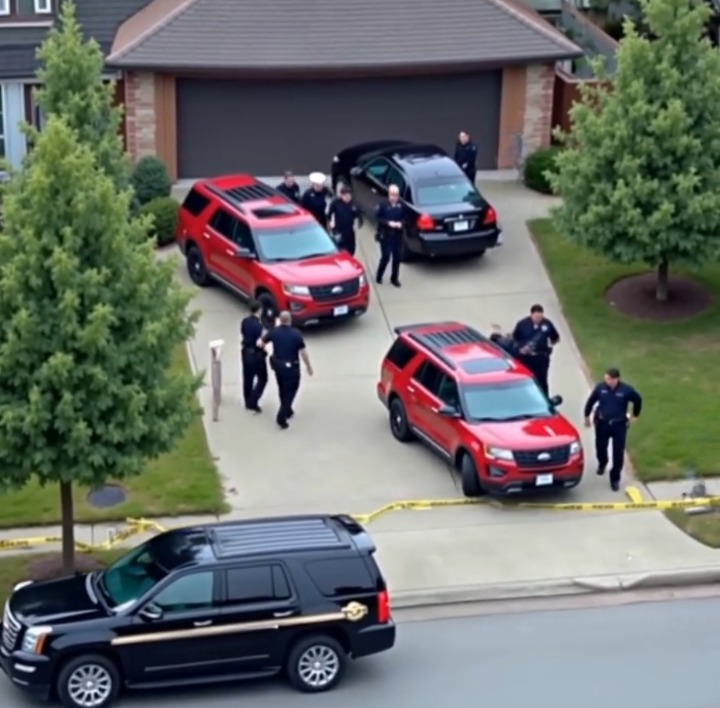
On May 9, 2025, fans around the world learned the heartbreaking news: Johnny Rodriguez, the first Mexican American country music star to break into the mainstream charts, had passed away at the age of 73. His daughter, Aubry Rodriguez, confirmed his death in a statement on social media. She did not share the cause, but her words made clear the depth of the loss: not just of a father, but of a man whose music shaped an era.
Rising from South Texas to Nashville’s Spotlight
Johnny Rodriguez’s journey to fame began far from the polished stages of the Grand Ole Opry. Born in Sabinal, Texas, in 1951, he grew up immersed in the sounds of both Mexican folk music and classic country. This blending of musical traditions would later become his hallmark—a smooth, emotional vocal style that seamlessly wove Spanish lyrics into traditional Nashville arrangements.

His break came in the early 1970s when country legend Tom T. Hall and singer Bobby Bare discovered him performing in Texas. Recognizing his talent and distinctive sound, they helped him secure a recording contract in Nashville.
Chart-Topping Hits and a Distinct Sound
Rodriguez’s career took off almost immediately. His 1973 hit “You Always Come Back (to Hurting Me)” reached No. 1 on the Billboard Hot Country Songs chart, marking the first time a Mexican American artist had achieved such success in country music.
Other hits followed in quick succession:
“Ridin’ My Thumb to Mexico” – A breezy yet heartfelt anthem that became one of his signature songs.
“I Just Can’t Get Her Out of My Mind” – A melodic confession of love and longing that showcased his smooth phrasing.
“That’s the Way Love Goes” – A ballad that cemented his status as a romantic storyteller.
Over the course of his career, Rodriguez scored six No. 1 singles and nine additional Top 10 hits, making him a consistent chart presence throughout the 1970s.
Breaking Barriers in Country Music
:max_bytes(150000):strip_icc():focal(818x261:820x263)/johnny-rodriguez-portrait-051025-91cda873173541769b5e7ccf2e7c1273.jpg)
At a time when country radio was dominated by white artists and traditional Southern themes, Johnny Rodriguez brought a fresh perspective. His Mexican American heritage was not something he concealed—it was woven into his music. From sprinkling Spanish verses into his songs to wearing his heritage proudly on stage, Rodriguez opened the door for future generations of Latino artists in the genre.
The Texas Country Music Hall of Fame would later describe him as the “greatest and most memorable Chicano country singer of all time.”
A Performer with Range and Heart
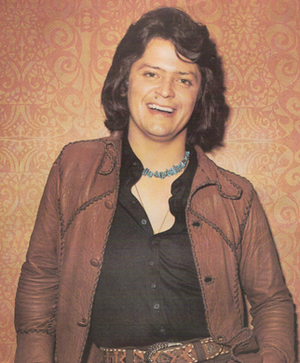
Fans remember Rodriguez not just for his studio recordings but for his electric live performances. Whether playing to a packed stadium or an intimate honky-tonk, he had a way of making the audience feel like he was singing directly to them.
His signature style—gentle yet powerful, romantic yet grounded—was inspired by his love for both George Jones and the mariachi music of his childhood. This combination gave his songs a timeless quality, allowing them to resonate across cultural and generational lines.
Personal Life and Resilience
img src="https://upload.wikimedia.org/wikipedia/commons/2/2b/Johnny_Rodriguez_press_photo--1976.jpg" style="width: 100%; margin: 10px 0px">
Rodriguez’s career, like many in the entertainment industry, had its ups and downs. He faced personal challenges, legal troubles, and shifting trends in country music. Yet, through it all, he continued to perform and connect with fans who never stopped requesting his classics.
At the time of his passing, his daughter confirmed that he was still married to Debbie McNeely, correcting earlier reports that suggested otherwise.
Influence on Future Generations
Johnny Rodriguez’s success carved out space for artists such as Freddy Fender, Rick Treviño, and contemporary stars like Kacey Musgraves—who have acknowledged the importance of diverse voices in the genre. His ability to bridge cultures through music was ahead of its time, and his trailblazing career remains a blueprint for aspiring artists from underrepresented backgrounds.
Rodriguez once said in an interview, “Music has no borders. If it’s honest, it speaks to everyone.” That philosophy is evident in the way his songs still connect with listeners today.
Remembering the Man Behind the Music
For many fans, Johnny Rodriguez’s music became part of the soundtrack to their lives—played at weddings, road trips, heartbreaks, and celebrations. His songs were more than melodies; they were stories, infused with lived experience and sung with authenticity.
Friends and collaborators recall his warmth off-stage, his deep laugh, and his unwavering commitment to his craft. Even in his later years, Rodriguez continued performing, often to sold-out crowds who knew every word to his hits.
A Legacy That Will Endure
Though Johnny Rodriguez is gone, his music will continue to play on jukeboxes, radio stations, and streaming playlists. His career not only left a mark on country music history but also reshaped its cultural landscape.
In remembering him, fans aren’t just saying goodbye to a performer—they’re honoring a pioneer who showed that country music could be enriched, not diminished, by embracing diversity.
His story is one of talent, perseverance, and the courage to be authentically oneself in an industry that wasn’t always ready for change. And in that way, Johnny Rodriguez will always be more than just a star—he will remain a symbol of possibility.
The stage lights have dimmed, the crowd’s cheers now only an echo in memory. For more than five decades, Johnny Rodriguez’s voice carried the heartache, grit, and storytelling spirit of country music—but with a sound and soul uniquely his own.

On May 9, 2025, fans around the world learned the heartbreaking news: Johnny Rodriguez, the first Mexican American country music star to break into the mainstream charts, had passed away at the age of 73. His daughter, Aubry Rodriguez, confirmed his death in a statement on social media. She did not share the cause, but her words made clear the depth of the loss: not just of a father, but of a man whose music shaped an era.
Rising from South Texas to Nashville’s Spotlight
Johnny Rodriguez’s journey to fame began far from the polished stages of the Grand Ole Opry. Born in Sabinal, Texas, in 1951, he grew up immersed in the sounds of both Mexican folk music and classic country. This blending of musical traditions would later become his hallmark—a smooth, emotional vocal style that seamlessly wove Spanish lyrics into traditional Nashville arrangements.

His break came in the early 1970s when country legend Tom T. Hall and singer Bobby Bare discovered him performing in Texas. Recognizing his talent and distinctive sound, they helped him secure a recording contract in Nashville.
Chart-Topping Hits and a Distinct Sound
Rodriguez’s career took off almost immediately. His 1973 hit “You Always Come Back (to Hurting Me)” reached No. 1 on the Billboard Hot Country Songs chart, marking the first time a Mexican American artist had achieved such success in country music.
Other hits followed in quick succession:
“Ridin’ My Thumb to Mexico” – A breezy yet heartfelt anthem that became one of his signature songs.
“I Just Can’t Get Her Out of My Mind” – A melodic confession of love and longing that showcased his smooth phrasing.
“That’s the Way Love Goes” – A ballad that cemented his status as a romantic storyteller.
Over the course of his career, Rodriguez scored six No. 1 singles and nine additional Top 10 hits, making him a consistent chart presence throughout the 1970s.
Breaking Barriers in Country Music
:max_bytes(150000):strip_icc():focal(818x261:820x263)/johnny-rodriguez-portrait-051025-91cda873173541769b5e7ccf2e7c1273.jpg)
At a time when country radio was dominated by white artists and traditional Southern themes, Johnny Rodriguez brought a fresh perspective. His Mexican American heritage was not something he concealed—it was woven into his music. From sprinkling Spanish verses into his songs to wearing his heritage proudly on stage, Rodriguez opened the door for future generations of Latino artists in the genre.
The Texas Country Music Hall of Fame would later describe him as the “greatest and most memorable Chicano country singer of all time.”
A Performer with Range and Heart

Fans remember Rodriguez not just for his studio recordings but for his electric live performances. Whether playing to a packed stadium or an intimate honky-tonk, he had a way of making the audience feel like he was singing directly to them.
His signature style—gentle yet powerful, romantic yet grounded—was inspired by his love for both George Jones and the mariachi music of his childhood. This combination gave his songs a timeless quality, allowing them to resonate across cultural and generational lines.
Personal Life and Resilience
img src="https://upload.wikimedia.org/wikipedia/commons/2/2b/Johnny_Rodriguez_press_photo--1976.jpg" style="width: 100%; margin: 10px 0px">
Rodriguez’s career, like many in the entertainment industry, had its ups and downs. He faced personal challenges, legal troubles, and shifting trends in country music. Yet, through it all, he continued to perform and connect with fans who never stopped requesting his classics.
At the time of his passing, his daughter confirmed that he was still married to Debbie McNeely, correcting earlier reports that suggested otherwise.
Influence on Future Generations
Johnny Rodriguez’s success carved out space for artists such as Freddy Fender, Rick Treviño, and contemporary stars like Kacey Musgraves—who have acknowledged the importance of diverse voices in the genre. His ability to bridge cultures through music was ahead of its time, and his trailblazing career remains a blueprint for aspiring artists from underrepresented backgrounds.
Rodriguez once said in an interview, “Music has no borders. If it’s honest, it speaks to everyone.” That philosophy is evident in the way his songs still connect with listeners today.
Remembering the Man Behind the Music
For many fans, Johnny Rodriguez’s music became part of the soundtrack to their lives—played at weddings, road trips, heartbreaks, and celebrations. His songs were more than melodies; they were stories, infused with lived experience and sung with authenticity.
Friends and collaborators recall his warmth off-stage, his deep laugh, and his unwavering commitment to his craft. Even in his later years, Rodriguez continued performing, often to sold-out crowds who knew every word to his hits.
A Legacy That Will Endure
Though Johnny Rodriguez is gone, his music will continue to play on jukeboxes, radio stations, and streaming playlists. His career not only left a mark on country music history but also reshaped its cultural landscape.
In remembering him, fans aren’t just saying goodbye to a performer—they’re honoring a pioneer who showed that country music could be enriched, not diminished, by embracing diversity.
His story is one of talent, perseverance, and the courage to be authentically oneself in an industry that wasn’t always ready for change. And in that way, Johnny Rodriguez will always be more than just a star—he will remain a symbol of possibility.
 Top Video Viral
Top Video Viral
